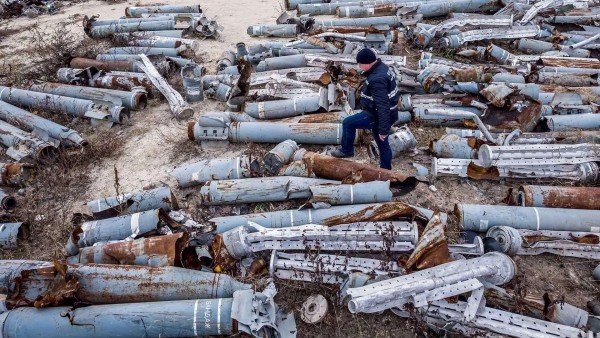Unexploded Ordnance Is Scattered Across Ukraine’s Front Lines. UMD Researchers Are Mapping Hot Spots With AI.
Shells, Rockets Fired in Wake of Russia’s Invasion Could Kill for Decades if Left in Place
Indiscriminate shelling along the front lines of Russia’s invasion of Ukraine has seeded farm fields and towns with untold numbers of unexploded munitions. Now University of Maryland geographical sciences researchers are combining satellite imagery with deep learning, a form of artificial intelligence (AI), in hopes of preventing a deadly harvest.
Their system has already mapped about 2.5 million artillery strike craters in a 500-mile arc stretching across the country’s heavily agricultural south and east—data that government and nongovernmental demining organizations can use to prioritize the most dangerous areas for cleanup when the tides of battle allow.
There’s no solid information on failure rates for the Soviet-era artillery shells both sides have used, but estimates range from 10% up to 30%, says Associate Professor Sergii Skakun, co-author of a recently published paper on the system in the journal Science of Remote Sensing—meaning nearly 1 million unexploded shells might be lying across the region they surveyed.
A Ukrainian scientist with expertise in satellite operations to monitor agriculture and environmental conditions, Skakun said that farmers in the region face a particularly frightening choice between bankruptcy and injury or death.
“When it’s time to plant you have to plant, or you have no income,” he said. “You can’t wait until it’s safe. But you are in danger of being blown up in your tractor.”
Photo: A Ukrainian expert examines the collected remnants of shells and missiles used by the Russian army to attack the Ukrainian city of Kharkiv. By OLEKSII FILIPPOV/AFP via Getty Images
Published on Wed, 07/19/2023 - 12:13


